Could it be possible that it was this simple all along?
That the key to the New York Rangers finally unlocking the potential of their two slow-developing draft lottery prizes was to team them up with the club’s best center?
It’s certainly appeared that way during this exhilarating experiment, less than two games old, in which the Blueshirts have been powered to a pair of wins by the nascent forward unit of Alexis Lafreniere, Kaapo Kakko and Mika Zibanejad.
The Rangers rolled past the Vegas Golden Knights 5-1 on Wednesday with a four-goal third period, a victory driven by the team’s ostensible new top line that showed its mid-game debut two nights earlier to be no fluke.
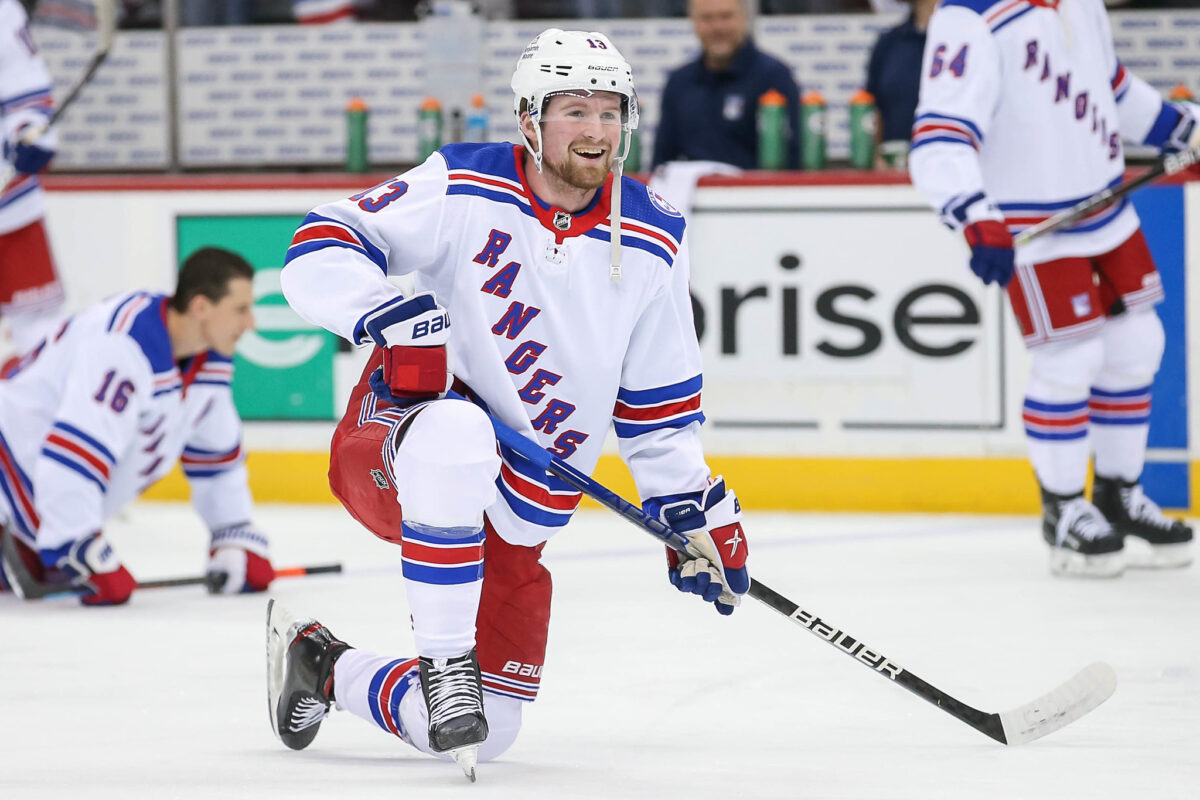
The Lafreniere-Kakko-Zibanejad unit combined for four goals and an assist to go with a plus-six rating. Zibanejad banged in a pair of power-play tallies, Kakko opened the scoring in the first period with a tip-in and Lafreniere’s patient goal from in close pushed the lead to three early in the third as the Rangers won two in a row for the first time since Nov. 19 and 22.
On Monday night at Madison Square Garden, coach Gerard Gallant appeared to strike gold when he threw the three players together as the St. Louis Blues grabbed control of a back-and-forth affair with a three-goal second period. The energy emanating from the line was immediate and unmistakeable, and the trio helped lead the Rangers back for a desperately-needed victory, with Lafreniere’s goal midway through the third proving to be the winner in a 6-4 final.
Lafreniere, Kakko Giving Struggling Rangers a Boost
It’s far too early to proclaim the Blueshirts free of the early-season malaise that has them at 13-10-5 and in a precarious spot as they look to return to the playoffs in a stacked Eastern Conference. The response to the assignment with Zibanejad from the kid wingers still looking to fulfill their top-of-the-draft pedigrees, though, should resonate within the organization going forward.
The lesson should be clear: Lafreniere and Kakko, the supposed future pillars of the top six, are thriving with the opportunity to play with an elite No. 1 center. Though both players have taken turns on Zibanejad’s line in the past few seasons, this move pushed the duo into a position of ultimate responsibility amongst the Rangers’ forwards – and that demands a long-term commitment to Lafreniere and Kakko playing amongst the club’s top two trios, either with Zibanejad or on the second line, their ups and downs notwithstanding.
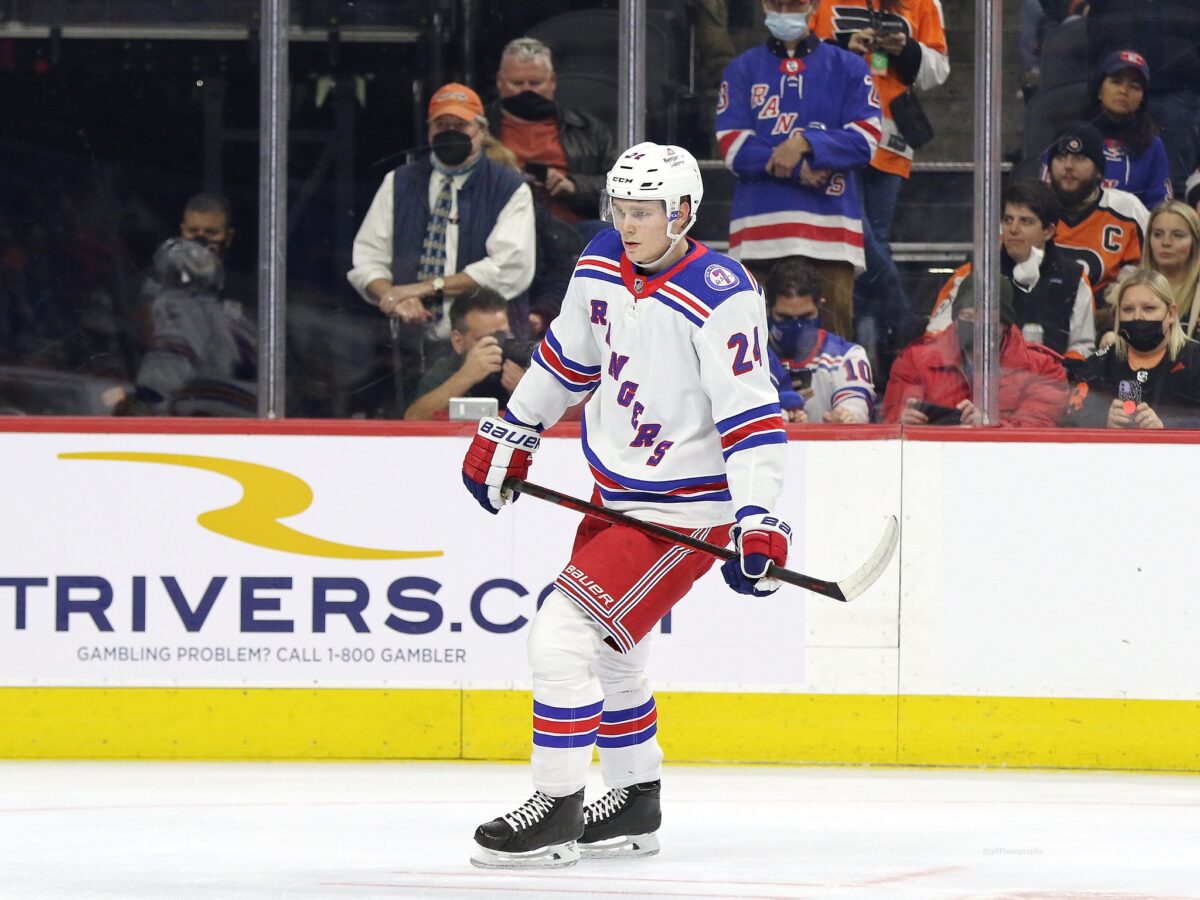
One of those downs, in fact, immediately preceded the creation of this forward unit Monday, with Lafreniere committing his third offensive-zone penalty in six games. Rather than bench him, Gallant promoted him and was rewarded for it.
Opinions abound on why Lafreniere and Kakko have yet to show substantial progress toward stardom by Years 3 and 4 for them, respectively. The past two games, however, should drive home the point that both were apparently champing at the bit to play in big spots. The Rangers, looking to find out whether they have a pair of keepers on their hands, need to stick with both players as top-six staples now, not at some ambiguous time down the road when they’ve “earned it.”
Related: Rangers’ Natural Regression Is Cruel but Necessary
In short, the Blueshirts need to finish their rebuild, one that appears now to have been ended prematurely by the temptation to lean on the elite veterans that dot the roster and who helped lead the Rangers to a surprise Eastern Conference Final appearance last spring.
The Rangers spent the better part of four years going through the arduous process of collecting high-end young talent, an admirable effort that was handled well from the beginning when the organization communicated to the fan base an intention to tear it all down and start from scratch. Ironically, the patience the team pleaded for while the youth developed in what’s become known as “The Letter” has seemingly been in short supply from those who requested it.
The Rangers have never really ridden with Lafreniere and Kakko from the beginning, partially because of timing. Kakko had been drafted second overall less than two weeks before the club brought in star left wing Artemi Panarin as a free agent on a seven-year, $81.5 million contract in 2019. They had not yet pulled off their giant draft lottery upset in 2020 that gave them the chance to select Lafreniere No. 1 when they re-signed fellow left wing Chris Kreider to a seven-year deal in February of that year.
Part of the reasoning for paying the two stars was to provide cover for Kakko, Lafreniere and the other kids that were about to begin flowing into the organization amidst the rebuilding project.
Rangers’ Commitment to Rebuild Appears to Have Wavered
In hindsight, conflicting priorities and events seemed to re-direct that vision of a gradual, brick-by-brick reshaping of the roster with an eye on creating sustainable contention. David Quinn, hired away from Boston University to become coach in May 2018 primarily to work with all of the youth, was dismissed after three seasons in large part because the veterans had tuned him out. Panarin, among the most successful free-agent signings in New York sports history, made it impossible not to feature him as he compiled 90-plus point seasons in two of his first three seasons on Broadway. Kreider, the homegrown product, finally fulfilled his vast potential in 2021-22 with a 52-goal performance.
As Panarin and Kreider played integral roles over the past three seasons in the Rangers’ earlier-than-expected resurgence, Lafreniere and Kakko remained largely out of the New York spotlight, almost forgotten at times. While keeping pressure off of them might have been the goal at the beginning, it seems obvious now that their development may have been somewhat forgotten as well.
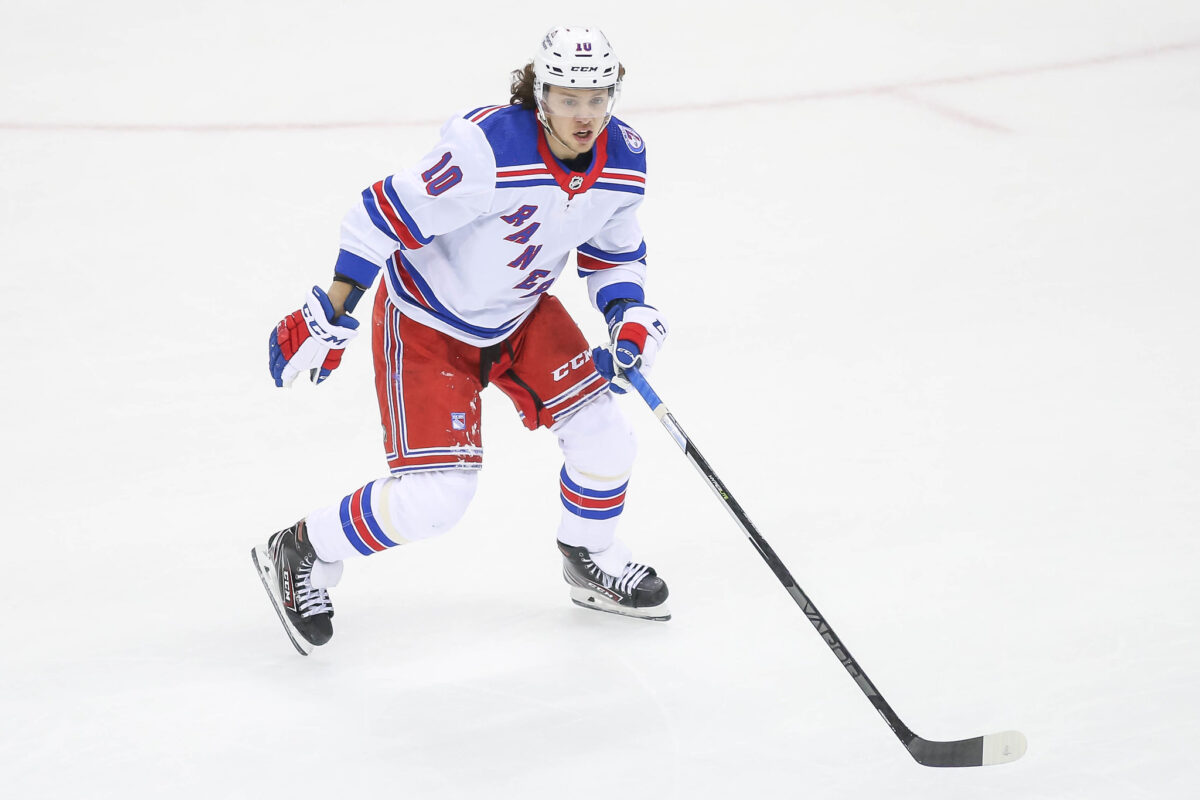
A quick look back would seem to confirm the lack of a clear plan to enable both players to grow. Lafreniere and Kakko mostly felt their way in lesser roles for their first couple of years. They got some abbreviated spins in the top six before Gallant formed the “Kid Line” with Filip Chytil just before the 2022 playoffs, a third forward unit which provided energy throughout the Rangers’ deep postseason run. Lafreniere and Kakko were then promoted to the top six during the most recent training camp – before Gallant decided early in the season to reunite the Kid Line.
The uncertain “process” has been anything but a model for nurturing promising youth, with neither winger able to author a breakout or get on an upward trend line. Kakko, for all the underlying numbers that show him to be a strong all-around player, has 67 points in 185 career games. Lafreniere has 65 in 163. The Rangers took both in the top two of their respective drafts because they thought they were selecting future elite offensive players.
Judging by the last two contests, that could still prove to be the case. Lafreniere and Kakko could also end up being busts. It won’t be possible to know either way until the Rangers accept the need to go through the remaining organizational pain of allowing them to make mistakes without suffering long-term demotions to the bottom six or worse – pain that the club tried to avoid by bringing in Panarin and keeping Kreider.
As outstanding as Kreider was last season, and Panarin has been since he’s arrived, the Rangers’ desire to compete in the present while simultaneously bringing along the future need to be compatible. If those prove not to be, which goal is more important to the organization?
If the Lafreniere-Zibanejad-Kakko unit is going to get a long leash, alternate captain Kreider, Zibanejad’s long-time running mate, will likely be manning the left side on the third line. Are the Rangers going to be able to manage that situation as they give their supposed future the lead?
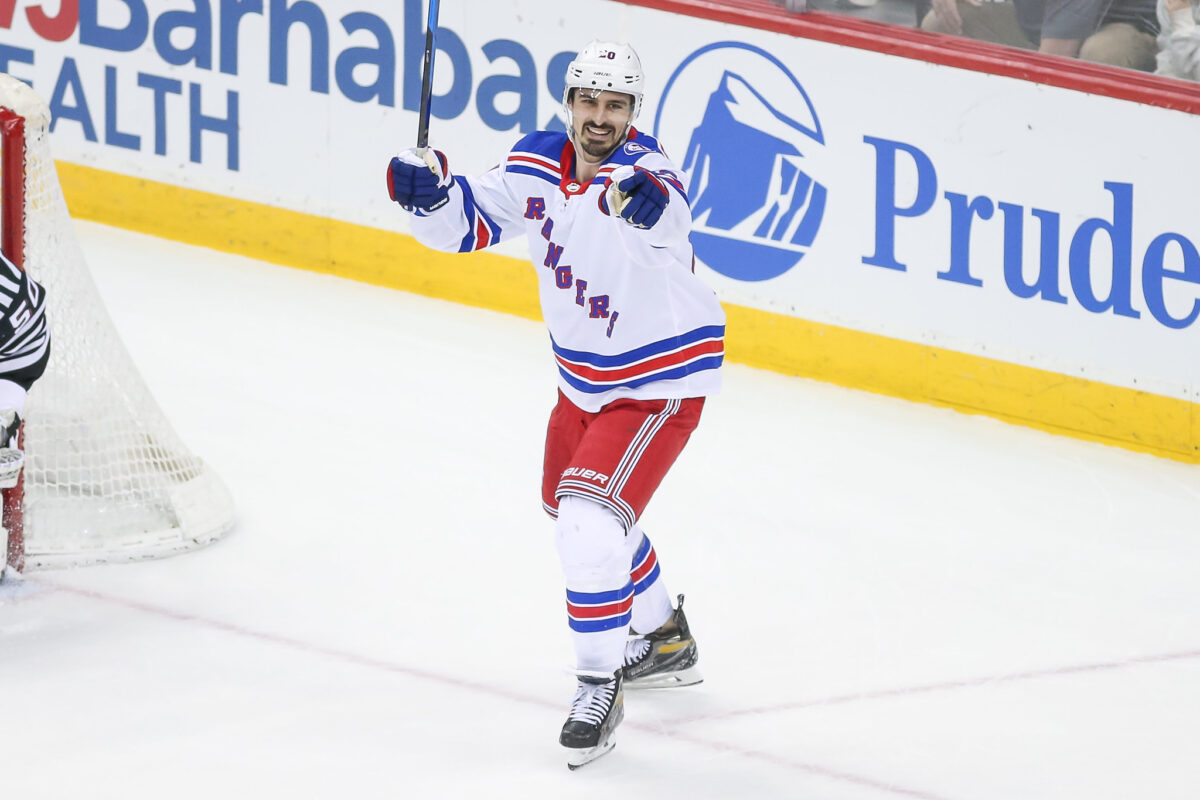
The Blueshirts appear to be at a critical inflection point. They need to get on an extended roll reminiscent of last season if they want to give themselves a realistic chance to return to the playoffs. What happens, though, if Lafreniere and Kakko slump? Will Gallant return them to third-line roles and feature veterans again, or is the organization ready to fully find out what it has in both players and emphasize their growth, regardless of the short-term results produced?
Lafreniere, Kakko Need to Remain in Important Roles Through Slumps
Last season’s deep playoff run creates pressure to not take a step back in 2022-23. It’s easy for Gallant, who created the line Monday out of what might have been desperation, to stick with the configuration with the way it’s going now. Doing so has given the Rangers’ two supposed future cornerstones perhaps their best chance to succeed and develop since their arrivals. Again, though, the choice might become more difficult in the future – especially with Gallant’s job security potentially in question.
“I’m excited,” Zibanejad said of his new linemates. “We talked a little bit about it (Wednesday) morning and we’ll get more time to talk about it – expectations from each other. I obviously want them to talk to me and tell me what they need from me to get this thing to hopefully work.” (From ‘New York Rangers’ Projected Lineup: Young Forwards Get Big Opportunities – Except For One’, lohud.com, 12/7/22)
Nothing is absolute, of course. Most players will get dropped in the lineup if they aren’t producing and/or not playing well. For Kakko and Lafreniere, though, it would probably help them to understand that better play after a demotion will return them to the top six in short order, not “earn” them another reformation of the Kid Line.
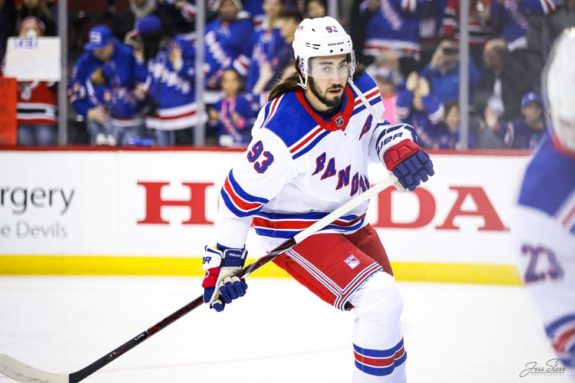
Unless the experiment goes horribly south, both 21-year-olds need to be given long-term opportunities to shine, ones they perhaps should have been afforded years ago. The results so far demand it: The Lafreniere-Zibanejad-Kakko combination has posted a 52.0 Corsi for percentage, 70.2 expected goals for and 58.3 scoring chances for, albeit in a very limited sample size. Patience and faith in the two kids, though, are sure to be required down the line.
“As a young guy, it means a lot that you feel that trust,” said Zibanejad, who has five goals and four assists during a six-game point streak. “It makes you feel like (the coaches) know what you’re capable of doing.”
Leaving Lafreniere and Kakko with Zibanejad, or at least in the top six, sends both a clear signal, one that they responded so well to Monday. Finally giving the lottery twins the chance to fail and learn and (the Rangers hope) eventually succeed, while also expanding their time on the power play, might cost the Blueshirts a playoff spot this season. Deciding not to do so could cost the franchise much more down the road.
